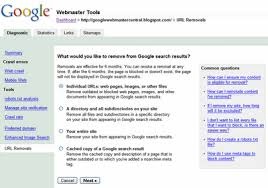How to File a Copyright Complaint and Remove Stolen Content from Fapello
If you’ve ever discovered your videos or images uploaded to Fapello without your consent, you’re not alone. Fapello is a platform known for hosting and sharing leaked or re-uploaded content — often without the creator’s permission, leading to the need for a notification to alert them .
For artists, influencers, and content creators, this can be deeply frustrating and even damaging.
1. Understand What’s Happening
Before jumping into a takedown, it’s important to confirm that your copyrighted material truly has been used without authorization, and seeking support can help clarify the situ .
Check whether the content:
- Belongs to you (you created it or own the rights).
- Is being distributed on Fapello or one of its mirror domains (like fapello.ch, fapellosu.com, or other variants).
- Appears publicly available without your consent or license.
Once confirmed, it’s time to act quickly. The longer it stays online, the more it spreads.
2. Collect Evidence
Before filing a complaint, document everything and notify the platform about the unauthorized use as soon as possible .
Take clear screenshots of:
- The URL(s) where your content appears.
- The page title, date, and any user information shown.
- Your original work (from your own files or official account).
This documentation helps you prove ownership and strengthens your DMCA (Digital Millennium Copyright Act) complaint.
3. Locate Fapello’s DMCA or Copyright Policy
Even though Fapello operates under different domain names, most versions of the site include a DMCA Policy page or a “Report Content” link.
There, you’ll usually find an email address where you can send your takedown notice to the hosting company — for example, something like dmca@fapello.com or listed on their “Contact” or “Terms of Service” pages.
If you can’t find one, use a WHOIS lookup tool to identify the domain registrar or hosting provider, and if needed, escalate the issue to the copyright office by sending your notice directly to them.
4. Prepare Your DMCA Takedown Notice
To remove stolen content, you’ll need to send a formal DMCA notice.
Your notice must include the following details:
- Your full legal name and contact information (email, phone, mailing address).
- A description of the copyrighted work that you believe was infringed.
- The exact URL(s) of the infringing material on Fapello.
- A statement like:
“I have a good-faith belief that the material identified above is not authorized by the copyright owner, its agent, or the law.” - A statement under penalty of perjury confirming the accuracy of your claim.
- Your electronic signature (just typing your full name works).
Once written, send your notice to Fapello’s designated DMCA email or through their form, or consider consulting a law firm for additional guidance
5. Wait for a Response and Monitor the Site
If your DMCA notice meets the legal requirements regarding copyright content , Fapello is obligated to remove or disable access to the infringing material promptly.
However, be aware that the same content might reappear on a mirror site or under a new username — so continue to monitor regularly.
If they fail to respond or remove the content, you can escalate by:
- Contacting the hosting provider with your original complaint.
- Submitting a removal request to search engines (e.g., Google’s DMCA form).
- Consulting a professional content removal or reputation management service.
6. Take Additional Steps to Protect Your Work
Here are a few ways to prevent future issues: and please note that proactive measures can help safeguard your content.
- Watermark your content before posting.
- Monitor your name or brand with reverse image or video search tools.
- Report quickly — speed is crucial in minimizing the spread.
- Secure your online accounts to reduce the risk of leaks or hacks.
If the content involves private or intimate material, you may also have grounds to file a privacy or non-consensual image complaint on behalf of the individuals depicted , which can sometimes result in faster removal.
Introduction to Copyright Infringement
- Copyright infringement occurs when someone uses copyrighted material without permission from the copyright owner.
- The Digital Millennium Copyright Act (DMCA) provides a framework for reporting and removing infringing material from websites.
- Understanding copyright law is essential for protecting intellectual property rights.
- Copyright holders can file a DMCA takedown notice to remove stolen content from infringing websites.
- Infringement can happen through various means, including publishing content without permission.
Understanding DMCA Takedown
- A DMCA takedown notice is a formal request to remove allegedly infringing material from a website or hosting provider.
- The notice must include specific information, such as the copyrighted work, the infringing material, and contact information.
- DMCA takedown notices are an effective way to protect intellectual property rights and remove stolen content.
- The DMCA provides a safe harbor provision for hosting providers who comply with takedown requests.
- Understanding the DMCA takedown process is crucial for copyright holders to protect their rights.
Preparing a DMCA Notice
- To prepare a DMCA notice, the copyright owner must identify the infringing material and the website hosting it.
- The notice must be sent to the website owner or hosting provider, and it must include all required information.
- The DMCA notice should be clear and concise, and it should provide sufficient information to identify the infringing material.
- The copyright owner can use a DMCA takedown notice template to ensure that all required information is included.
- It’s essential to keep a record of the notice and any subsequent communication with the website owner or hosting provider.
Submitting a Takedown Request
- The DMCA takedown request should be submitted to the website owner or hosting provider as soon as possible.
- The request can be sent via email or mail, and it should include all required information.
- The hosting provider or website owner must respond to the takedown request within a few hours or days.
- If the hosting provider or website owner fails to respond or remove the infringing material, the copyright owner can take further action.
- The copyright owner can also submit a takedown request to search engines like Google to remove the infringing material from search results.
Working with the Hosting Provider
- The hosting provider plays a crucial role in removing infringing material from their servers.
- The hosting provider must respond to DMCA takedown notices and remove the infringing material within a reasonable time.
- The hosting provider can also provide information about the infringing website or material to the copyright owner.
- The copyright owner can work with the hosting provider to ensure that the infringing material is removed and that the infringement does not continue.
- The hosting provider’s cooperation is essential in protecting intellectual property rights and removing stolen content.
Removing Content from Other Sites

- Infringing material can be hosted on multiple websites, and the copyright owner must remove it from all sites.
- The copyright owner can use DMCA takedown notices to remove the infringing material from other sites.
- The copyright owner can also work with the hosting providers of other sites to remove the infringing material.
- Removing content from other sites is essential to prevent further infringement and protect intellectual property rights.
- The copyright owner can use online tools to track and remove infringing material from multiple sites.
Leveraging Google Removal Tools
- Google provides tools for removing infringing material from search results.
- The copyright owner can use Google’s removal tools to remove the infringing material from search results.
- Google’s removal tools can help reduce the visibility of infringing material and prevent further infringement.
- The copyright owner can also use Google’s copyright removal form to request the removal of infringing material.
- Leveraging Google’s removal tools is an effective way to protect intellectual property rights and remove stolen content.
Protecting Your Intellectual Property
- Protecting intellectual property rights is essential for creators and copyright owners.
- The DMCA provides a framework for protecting intellectual property rights and removing infringing material.
- Copyright owners can use DMCA takedown notices to remove stolen content from infringing websites.
- The copyright owner can also work with hosting providers and search engines to remove infringing material.
- Protecting intellectual property rights requires ongoing effort and vigilance to prevent infringement.
Understanding Fair Use
- Fair use is a doctrine that allows for the limited use of copyrighted material without permission.
- Fair use is determined on a case-by-case basis, and it depends on factors such as the purpose and nature of the use.
- The copyright owner can consider fair use when determining whether to file a DMCA takedown notice.
- Understanding fair use is essential for copyright owners to protect their rights and avoid unnecessary litigation.
- Fair use can be a complex issue, and the copyright owner may need to consult with an attorney to determine whether fair use applies.
Dealing with Infringing Content
- Infringing content can be removed using DMCA takedown notices.
- The copyright owner can work with hosting providers and search engines to remove infringing material.
- The copyright owner can also use online tools to track and remove infringing material.
- Dealing with infringing content requires ongoing effort and vigilance to prevent further infringement.
- The copyright owner can also consider legal action against the infringing website or individual.
Hosting Provider Responsibilities
- Hosting providers have a responsibility to respond to DMCA takedown notices and remove infringing material.
- Hosting providers must have a policy in place for handling DMCA takedown notices.
- Hosting providers can provide information about the infringing website or material to the copyright owner.
- Hosting providers can also work with the copyright owner to prevent further infringement.
- Hosting providers’ cooperation is essential in protecting intellectual property rights and removing stolen content.
Legal Action
- The copyright owner can take legal action against the infringing website or individual.
- Legal action can be taken in addition to filing a DMCA takedown notice.
- The copyright owner can consult with an attorney to determine the best course of action.
- Legal action can provide additional remedies, such as damages and injunctive relief.
- The copyright owner can also consider alternative dispute resolution methods, such as mediation or arbitration.
Content Removed
- Once the infringing material is removed, the copyright owner can confirm that the content has been removed.
- The copyright owner can also monitor the website or search results to ensure that the infringement does not continue.
- The copyright owner can use online tools to track and remove any remaining infringing material.
- Content removal is an essential step in protecting intellectual property rights and preventing further infringement.
- The copyright owner can also consider taking steps to prevent future infringement, such as registering their copyright or using copyright notices.
Infringing Website
An infringing website is a website or online platform that makes copyrighted material available to the public without authorization from the copyright holder. This includes uploading, streaming, or linking to stolen or pirated content often found on an infringing site .
Examples
Some examples of infringing activity include:
- Reposting another creator’s photos, videos, or artwork without consent.
- Sharing premium or subscription-based content (e.g., OnlyFans, Patreon, etc.) for free.
- Hosting pirated media, like movies, music, or eBooks.
- Operating mirror sites that re-upload taken-down materials to evade copyright enforcement.
For instance, if a platform like Fapello publishes leaked or copied content without permission, that site (or the specific pages involved) may be considered an infringing website under copyright law.
Why It Matters
Copyright infringement harms creators by:
- Stealing revenue and credit for their work.
- Damaging their online reputation or brand.
- Violating privacy, especially in cases of leaked or intimate content.
Filing a copyright complaint or DMCA takedown is the proper way to have such infringing material removed.
What Is Leaked Content?
Leaked content means any private or exclusive media (photos, videos, messages, files, etc.) that has been released or shared online without the consent of the person who owns or appears in it due to unauthorized distribution .
Leaks can happen through:
- Account hacks or data breaches
- Unauthorized sharing by subscribers, followers, or ex-partners
- Illegal copying or redistribution from paid platforms
- Screen recordings of private videos
When this happens, the material is often posted on infringing websites like file-sharing platforms, adult sites, or “leak” forums — for example, sites such as Fapello, which has been reported for hosting leaked creator content.
Final Thoughts
Knowing how to file a copyright complaint and remove stolen content from Fapello can make a huge difference in protecting your creative work.
While the process can feel overwhelming, a clear and properly formatted DMCA notice is often enough to get results.
If your takedown requests are ignored or you need help identifying where your content is hosted, consider reaching out to a digital rights lawyer or a professional content removal service if the infringement continues .
FAQs
1. What is Fapello and why is my content there?
Fapello is a website that often hosts or shares photos and videos — sometimes taken from social media or subscription-based platforms without the creator’s permission. If your content appears there, it’s likely been re-uploaded or “leaked” by someone else.
2. Can I really remove my stolen content from Fapello?
Yes, in many cases you can. By submitting a proper DMCA takedown notice to Fapello (or its hosting provider), you can request the removal of any copyrighted material posted without your consent as the rights holder . However, some mirror sites may reappear, so continued monitoring is recommended.
3. What should I include in a DMCA complaint to Fapello?
Your DMCA notice must include all this important information :
- Your full name and contact information
- A description of your original work
- The URLs of the infringing material
- A good-faith statement that the content is unauthorized
- A statement under penalty of perjury that your claim is accurate
- Your electronic signature
4. How long does it take for Fapello to respond to a copyright complaint?
Response times vary. Some creators report removals within a few days, while others may wait longer. If you don’t receive a reply within a week or two, you can escalate your complaint to the hosting provider or domain registrar, or submit a Google search removal request to de-index the content.
5. What if Fapello ignores my takedown request?
If Fapello doesn’t respond, you still have options and services available to assist you :
- Contact their hosting provider directly using your DMCA notice.
- File a DMCA request with Google to remove the URLs from search results.
- Seek help from a reputation management or content removal specialist.
- If the material is private or intimate, consider filing a non-consensual content complaint for faster action.



.webp)
.webp)
.webp)
